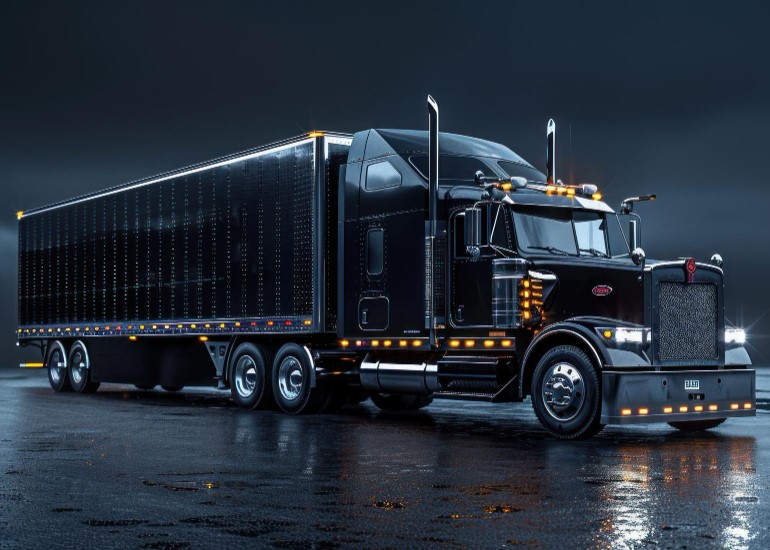Online CDL Permit Practice Tests
state Ohio
Ace Your Ohio CDL Exam: Free Practice Tests
Don't waste your time - start practicing with free online tests today
Our free online CDL practice tests cover all the essential topics, including General Knowledge, Air Brakes, and Combination Vehicles. Practice at your own pace, anytime, anywhere, to build your confidence and ensure you’re fully prepared for your CDL exam.
General Knowledge Test
Air Brakes
Test
Combination Vehicle Test
Step-by-Step Guide to Getting a CDL in Ohio
Step 1: Determine Your CDL Class and Endorsements
Before applying for a Commercial Driver License (CDL) in Ohio, it’s essential to identify the appropriate CDL class and any necessary endorsements based on the type of vehicle you intend to operate and the cargo you plan to transport.
CDL Classes in Ohio:
Class A: Permits operation of any combination of vehicles with a Gross Combination Weight Rating (GCWR) of 26,001 pounds or more, provided the vehicle being towed has a Gross Vehicle Weight Rating (GVWR) exceeding 10,000 pounds. This typically includes vehicles like tractor-trailers and truck-trailer combinations.
Class B: Allows operation of a single vehicle with a GVWR of 26,001 pounds or more, or any such vehicle towing another vehicle not exceeding 10,000 pounds GVWR. Examples include large buses, box trucks, and dump trucks.
Class C: Covers vehicles designed to transport 16 or more passengers (including the driver) or vehicles used to transport hazardous materials, provided the vehicle does not meet the criteria for Class A or B.
CDL Endorsements in Ohio:
Depending on your intended driving duties, you may need to obtain specific endorsements. Common endorsements include:
(P) Passenger: Required to operate vehicles designed to carry 16 or more passengers, such as buses.
(S) School Bus: Necessary for driving a school bus.bmv.ohio.gov
(N) Tank Vehicle: Needed to operate vehicles transporting liquids or gases in bulk containers.
(H) Hazardous Materials: Required for transporting hazardous materials; applicants must meet federal standards, including a background check. bmv.ohio.gov
(T) Double/Triple Trailers: Allows operation of vehicles pulling double or triple trailers.
Each endorsement requires passing additional knowledge tests, and some may necessitate skills tests.
Restrictions:
Certain limitations may be placed on your CDL based on the vehicle used during testing or specific medical conditions. For example, if you take the skills test in a vehicle without air brakes, a restriction may be added prohibiting the operation of vehicles with air brakes. It’s important to be aware of any restrictions that may apply to ensure compliance with Ohio’s CDL regulations.
Step 2: Obtain a Commercial Learner's Permit (CLP):
To begin the process of obtaining a Commercial Driver License (CDL) in Ohio, you must first acquire a Commercial Learner’s Permit (CLP). This permit allows you to practice driving commercial vehicles under the supervision of a qualified CDL holder.
Eligibility Requirements:
Age: You must be at least 18 years old.
Driver’s License: Possess a valid Ohio driver’s license.
Residency and Citizenship: Provide proof of U.S. citizenship or permanent residency.
Application Process:
Self-Certification: Determine the type of commercial driving you intend to perform and complete the CDL Self-Certification Authorization (Form BMV 2159). This form is available on the
Medical Certification: Depending on your self-certification category, you may need to submit a Medical Examiner’s Certificate. Ensure you meet the medical qualifications as specified by the Federal Motor Carrier Safety Administration (FMCSA).
Knowledge Tests: Visit a driver exam station to take the required knowledge tests for the CDL class and any endorsements you seek. These tests assess your understanding of operating commercial vehicles safely.
Vision Screening: Undergo a vision test to confirm you meet the minimum visual acuity standards.
Temporary Instruction Permit Identification Card (TIPIC): After passing the knowledge tests and vision screening, proceed to a deputy registrar license agency to purchase the TIPIC, commonly referred to as the CLP. The CLP is valid for 12 months.
Practice Driving:
With a CLP, you are permitted to operate a commercial motor vehicle on public roads, provided you are accompanied by a CDL holder who is properly endorsed for the vehicle. This supervised driving experience is essential for developing the skills necessary to pass the CDL skills test.
Additional Considerations:
Skills Test Waiting Period: You must hold the CLP for a minimum of 14 days before scheduling the CDL skills test.
Validity and Renewal: The CLP is valid for 12 months. If you do not obtain your CDL within this period, you may need to reapply and retake the knowledge tests.
For comprehensive details and updates on obtaining a CLP in Ohio, refer to the
Step 3: Complete Entry-Level Driver Training (ELDT):
To take the CDL skills test in Ohio, many applicants must first complete Entry-Level Driver Training (ELDT). This training is required under federal law and ensures drivers are properly trained before operating commercial motor vehicles.
Who Needs ELDT
You must complete ELDT if you are:
Applying for a Class A or Class B CDL for the first time
Upgrading from a Class B to a Class A CDL
Adding a Passenger (P), School Bus (S), or Hazardous Materials (H) endorsement for the first time
This requirement applies to applicants who began the CDL process on or after February 7, 2022.
ELDT Training Components
ELDT includes two main parts:
1. Theory Instruction
Covers topics such as:
Basic vehicle operation
Vehicle inspections and maintenance
Safe driving techniques
Hours-of-service regulations
Handling emergencies and hazardous conditions
To pass, you must score at least 80 percent on the written assessments.
2. Behind-the-Wheel (BTW) Training
Consists of practical, hands-on driving, completed both on a training range and on public roads.
There is no minimum number of hours required, but you must show proficiency in all required driving skills.
Training Provider Requirements
ELDT must be completed through a provider registered in the FMCSA’s Training Provider Registry. Training completed with a non-registered provider will not be accepted in Ohio.
Verification and Next Steps
Once you finish ELDT, the training provider will electronically submit proof of completion to the national registry. The Ohio Bureau of Motor Vehicles will verify your ELDT record before allowing you to:
Schedule a CDL skills test
Take the Hazardous Materials knowledge test (if applying for the H endorsement)
Important Reminder
You must complete all required ELDT before proceeding with testing. Starting ELDT early in the licensing process helps avoid delays and ensures you meet all federal and state requirements.
Step 4: Practice with Your CLP:
After obtaining your Commercial Learner’s Permit (CLP) in Ohio, the next step is to gain supervised driving experience. This practice period is essential for preparing for the CDL skills test and becoming a safe, qualified commercial driver.
Supervised Driving Requirements
While holding a CLP, you are allowed to operate a commercial motor vehicle only under the direct supervision of a qualified CDL holder. The supervising driver must:
Possess a valid CDL for the same class and type of vehicle
Have the necessary endorsements for the vehicle being operated
Be seated in the front passenger seat at all times while you are driving
This ensures that you are receiving immediate instruction and guidance during your training.
What to Practice
During your CLP period, you should focus on building the skills required to pass the CDL skills test. These include:
Conducting a full pre-trip vehicle inspection
Performing basic control maneuvers such as backing, turning, and parking
Driving safely in real-world conditions, including city traffic, highway merging, lane changes, and observing road signs and signals
Practice in the same class and type of vehicle you intend to use for the CDL skills test. If you use a vehicle with automatic transmission or without air brakes, your CDL will carry a restriction limiting the types of vehicles you are authorized to operate.
CLP Validity and Waiting Period
Your Commercial Learner’s Permit is valid for 12 months in Ohio. You must hold your CLP for a minimum of 14 days before you are eligible to take the CDL skills test. This waiting period allows time for meaningful practice and training before testing.
Important Considerations
During the practice period, ensure your Medical Examiner’s Certificate (DOT medical card) remains valid and on file with the Ohio Bureau of Motor Vehicles. Also, follow all applicable safety laws and CDL-specific regulations. Gaining proper experience during this time increases your readiness for the CDL test and promotes safe, professional driving habits.
Step 5: Schedule and Pass the CDL Skills Test:
After holding your Commercial Learner’s Permit (CLP) for at least 14 days and completing Entry-Level Driver Training (ELDT), if required, you are eligible to take the CDL skills test. This test is a critical step in obtaining your Commercial Driver License (CDL) and demonstrates your ability to safely operate a commercial motor vehicle.
How to Schedule the Skills Test
CDL skills tests in Ohio must be scheduled through a state-approved testing location. You may schedule your test by contacting a CDL skills testing facility directly or through the Ohio Bureau of Motor Vehicles (BMV). Tests are available by appointment only and may require advance booking due to demand.
What to Bring on Test Day
When you arrive for your test, you must present the following documents:
A valid Ohio driver’s license
Your Commercial Learner’s Permit (CLP)
A current Medical Examiner’s Certificate (if required)
A vehicle that matches the class of CDL you are testing for and is in safe operating condition
Failure to bring the required documents or a suitable vehicle may result in test cancellation.
Structure of the CDL Skills Test
The CDL skills test consists of three separate components:
1. Pre-Trip Vehicle Inspection
You will be required to inspect the vehicle and explain what you are checking and why. This section evaluates your knowledge of the vehicle’s safety and mechanical condition.
2. Basic Vehicle Control
You will demonstrate your ability to control the vehicle in a confined space. Maneuvers include straight-line backing, offset backing, and either parallel parking or alley docking, depending on the vehicle type and test configuration.
3. On-Road Driving
You will drive the vehicle in real traffic conditions, following directions from the examiner. You will be evaluated on lane usage, turns, intersections, traffic signals, merging, and overall vehicle control.
Vehicle and Equipment Requirements
The vehicle you bring for testing must be representative of the class of license you are pursuing. If the vehicle has an automatic transmission or lacks air brakes, your CDL may include restrictions limiting your ability to operate certain commercial vehicles.
Retesting Policy
If you fail any portion of the CDL skills test, you may be required to retake only the section(s) you did not pass. Retesting may involve additional fees and a required waiting period before rescheduling.
Test Readiness
Before scheduling your CDL skills test, ensure that you have practiced all required driving and inspection tasks and are confident in your ability to perform them to a professional standard. Being fully prepared not only increases your chances of passing but also reinforces safe driving habits for your future career.
Step 6: Obtain Your CDL:
Once you have successfully passed all three portions of the CDL skills test—pre-trip inspection, basic control, and on-road driving—you are eligible to receive your Commercial Driver License (CDL). This final step must be completed in person at an Ohio Bureau of Motor Vehicles (BMV) deputy registrar license agency.
Issuance Process
To obtain your CDL, visit a deputy registrar location and present the following:
Your valid Ohio driver’s license
Your Commercial Learner’s Permit (CLP)
Proof of completion of the CDL skills test (recorded electronically)
Your current Medical Examiner’s Certificate (if required)
Any other supporting documents required for endorsements or identity verification
Payment for applicable CDL fees based on class and endorsements
A vision screening may also be required at the time of issuance.
CDL Class and Endorsements
Your new CDL will include:
The CDL class (A, B, or C) corresponding to the vehicle you tested in
Any endorsements earned, such as Passenger (P), School Bus (S), Tank (N), or Hazardous Materials (H)
Any necessary restrictions based on the vehicle used for testing, such as no air brakes or automatic transmission only
Make sure to review your license for accuracy before leaving the deputy registrar office.
License Validity and Renewal
In Ohio, a CDL is typically valid for four years. You are responsible for renewing it before the expiration date and for maintaining a current Medical Examiner’s Certificate on file with the BMV. Failure to maintain medical certification may result in the downgrade or suspension of your CDL.
Additional Requirements for Certain Endorsements
If you are applying for a Hazardous Materials (H) endorsement, you must complete a Transportation Security Administration (TSA) background check and fingerprinting before the endorsement can be added to your CDL. This process must be completed and cleared before issuance.
Maintaining CDL Eligibility
To remain eligible to operate commercial vehicles, CDL holders in Ohio must comply with federal and state regulations. This includes reporting address changes, maintaining up-to-date medical certification, adhering to traffic laws, and completing renewal requirements on time.
Completing this final step officially qualifies you to drive commercial vehicles as authorized under your license class and endorsements, enabling you to begin or continue your professional driving career.
Additional Considerations:
In addition to completing the required steps to obtain a Commercial Driver License (CDL), drivers in Ohio must be aware of several important responsibilities and compliance requirements that apply both during and after the licensing process.
Medical Certification Requirements
All CDL applicants and holders must maintain a valid Medical Examiner’s Certificate, commonly known as a DOT medical card. This certificate must be issued by a medical examiner listed on the National Registry of Certified Medical Examiners. Drivers must submit their medical certification to the Ohio Bureau of Motor Vehicles and keep it up to date at all times. Failure to maintain valid certification may result in disqualification or downgrade of CDL privileges.
Self-Certification Requirement
CDL holders must complete a self-certification to indicate the type of commercial driving they intend to perform. The self-certification categories include interstate or intrastate and excepted or non-excepted. Your medical certification requirements are determined by this selection, and it must be updated when your driving status changes.
Hazardous Materials Endorsement Requirements
Drivers applying for or renewing a Hazardous Materials (H) endorsement must pass the hazardous materials knowledge test and complete a federal Transportation Security Administration (TSA) security threat assessment. This includes fingerprinting and a background check, which must be renewed every five years. The endorsement will not be issued or renewed until the background check is successfully completed and approved.
CDL Disqualifications and Safety Violations
CDL holders are held to higher safety standards than non-commercial drivers. Certain traffic offenses and violations can lead to CDL disqualification or suspension, even if committed in a personal vehicle. Disqualifying offenses include driving under the influence of alcohol or drugs, leaving the scene of an accident, using a vehicle in the commission of a felony, and repeated serious traffic violations such as excessive speeding, reckless driving, or improper lane changes.
License Class, Endorsements, and Restrictions
Your CDL will list the appropriate class based on your skills test and the vehicle used, along with any endorsements you earned and any applicable restrictions. Restrictions may be added for reasons such as testing in a vehicle without air brakes or automatic transmission. Understanding and adhering to these restrictions is essential to remaining compliant with state and federal law.
Military Skills Test Waiver
Ohio participates in the Military Skills Test Waiver program. Eligible military personnel and veterans with recent experience operating military commercial vehicles may qualify for a waiver of the CDL skills test. They must still pass the required knowledge tests and submit appropriate documentation verifying their experience within the required timeframe.
License Renewal and Updates
CDL holders are responsible for renewing their license before expiration and ensuring all personal information is kept up to date with the BMV. This includes reporting any address changes, updating medical certification, and renewing endorsements as necessary. Renewals may require re-testing or additional documentation depending on the license class or endorsements.
By understanding and complying with these additional considerations, CDL holders in Ohio can maintain their driving privileges, avoid penalties, and operate commercial motor vehicles legally and safely.
Frequently asked questions
Who needs a Commercial Driver License (CDL) in Ohio?
Anyone who operates a commercial motor vehicle that meets the criteria for a Class A, B, or C license—such as large trucks, buses, or vehicles carrying hazardous materials or 16 or more passengers—must have a valid CDL.
What are the age requirements to obtain a CDL in Ohio?
You must be at least 18 years old to obtain a CDL for intrastate driving within Ohio. To operate a commercial vehicle across state lines, transport passengers, or haul hazardous materials, you must be at least 21 years old.
What are the different CDL classes available in Ohio?
Class A is for combination vehicles with a gross combination weight rating (GCWR) of 26,001 pounds or more, towing a unit over 10,000 pounds. Class B is for single vehicles over 26,001 pounds or towing a unit under 10,000 pounds. Class C is for vehicles that don’t meet Class A or B criteria but transport 16 or more passengers or hazardous materials.
What documents are required to apply for a CDL?
Applicants must provide a valid Ohio driver’s license, proof of U.S. citizenship or lawful presence, proof of Ohio residency, their Social Security number, a valid Medical Examiner’s Certificate, and any additional documents required for endorsements.
How do I get a Commercial Learner’s Permit (CLP) in Ohio?
To get a CLP, you must pass the CDL general knowledge test and any endorsement exams, complete a self-certification form, submit medical certification (if required), and visit a deputy registrar license agency to purchase the permit.
Is Entry-Level Driver Training (ELDT) required?
Yes, ELDT is required for first-time applicants for a Class A or B CDL, individuals upgrading from Class B to A, or those seeking Passenger, School Bus, or Hazardous Materials endorsements. ELDT must be completed through a registered training provider.
What does the CDL skills test include?
The CDL skills test includes a pre-trip vehicle inspection, a basic control skills test, and an on-road driving exam. Each portion must be completed using a vehicle that matches the class of CDL you are applying for.
What happens if I fail the CDL skills test?
If you fail any portion of the skills test, you may be required to wait a specified period before retesting. You can retake only the section you failed, but retesting may involve additional fees and scheduling.
How long is a CDL valid in Ohio?
A CDL is generally valid for four years. Renewal requires updated medical certification, payment of applicable fees, and potentially updated documents depending on endorsements or class.
Is there a military waiver for the CDL skills test?
Yes, Ohio offers a Military Skills Test Waiver for qualified current or former service members with experience operating military vehicles. Applicants must submit documentation showing at least two years of relevant driving experience within the last year.



